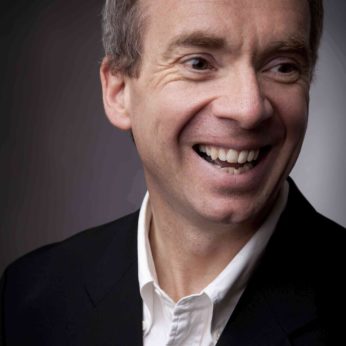Composer: Dietrich Buxtehude (b. 1637 - d. 1707)
Performance date: 01/07/2015
Venue: St. Brendan’s Church
Composition Year: 1690
Duration: 00:06:00
Recording Engineer: Richard McCullough, RTÉ lyric fm
Instrumentation Category:Small Mixed Ensemble
Instrumentation Other: T-solo, 2vn,vc,lute,hpd
Artists:
James Toll -
[violin]
Sophie Gent -
[violin]
Sarah McMahon -
[cello]
David Miller -
[lute]
Jonathan Cohen -
[harpsichord]
James Gilchrist -
[tenor]

Dietrich Buxtehude was a composer and organist
believed to be of Danish origin; however no documents exist to verify the exact
date and place of his month and his nationality is much disputed. Buxtehude was
most famous during his lifetime as an organist. He presided over the two organs
of the Marienkirche in Lübech from 1668 until his death almost forty years
later. He attracted numerous pupils at this post and in 1705 Johann Sebastian
Bach made a 300 mile trip on foot to hear him play.
Buxtehude directed a renowned series of church
concerts every year before and during Advent, known as Abendmusiken. Although established by his predecessor Franz Tunder
[1614-1667] Buxtehude expanded the fame of the concerts, receiving sponsorship
from local business men, which allowed him to stage semi-dramatic vocal works
and hire soloists from further afield. The works performed at these concerts
were scored for smaller-scale ensembles, for between one and four solo vocal
parts with one to five instruments.
The majority of Buxtehude’s vocal works were
small-scale pieces such as Quemadmodum
desiderat cervus. Pieces like Quemadmodum
may have been performed at Abendmusiken concerts
and during services although it is equally possible that they were used outside
of church, in private devotion or informal gatherings. It is also plausible
that these works were performed at the Swedish court in Stockholm where the
Kapellmeister, Gustaf Düben [c.1628-1690] gathered an immense collection of
vocal music, including the majority of Buxtehude’s output.
The preferred musical genre for private devotion or
gatherings was the strophic aria for solo voice and continuo. The words for
such pieces were taken from current German or Latin devotional poetry rather
than the 16th Century texts by Luther. The text is usually intimate and refers
to the believer’s sweet and passionate relationship with Christ.
One special type of composition that occurred
frequently in sacred music of the 17th-century is the ciaconna, a variation setting over a repeated basso ostinato. Quemadmodum
desiderat cervus belongs to this genre; the ostinato is established at the beginning of the instrumental
introduction and is just two bars in length. Against this, Buxtehude provides a
brilliant selection of figures for highly virtuosic upper voices, ranging from
soulful slurs to elated enthusiastic melismas.
Copyright © 2024 West Cork Music. All rights reserved.
Designed and developed by Matrix Internet